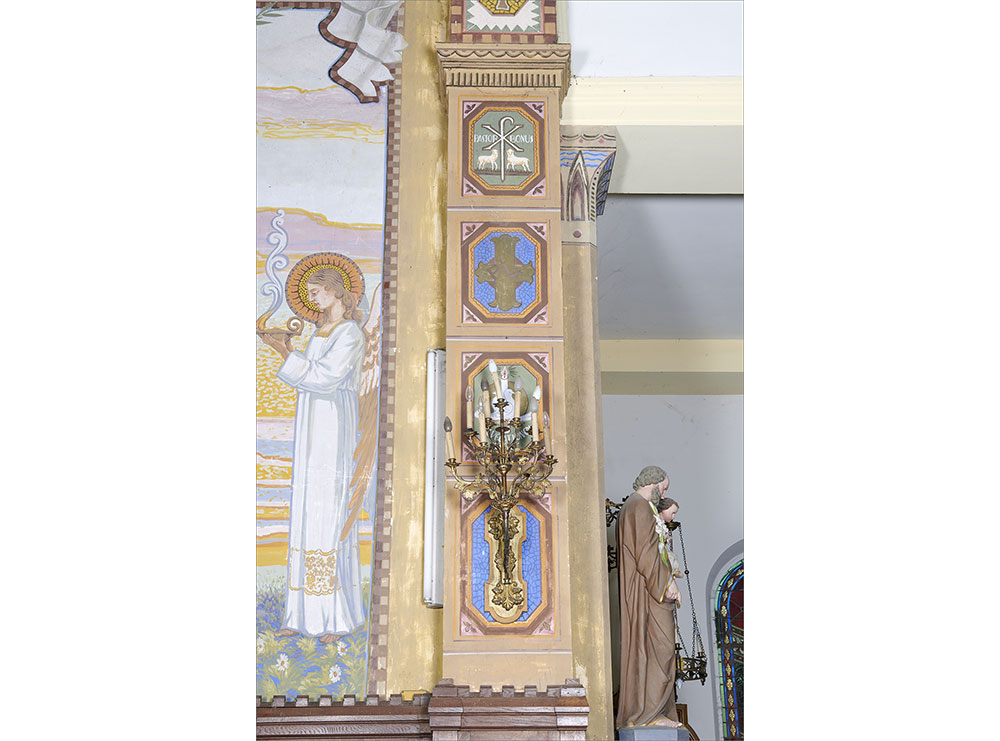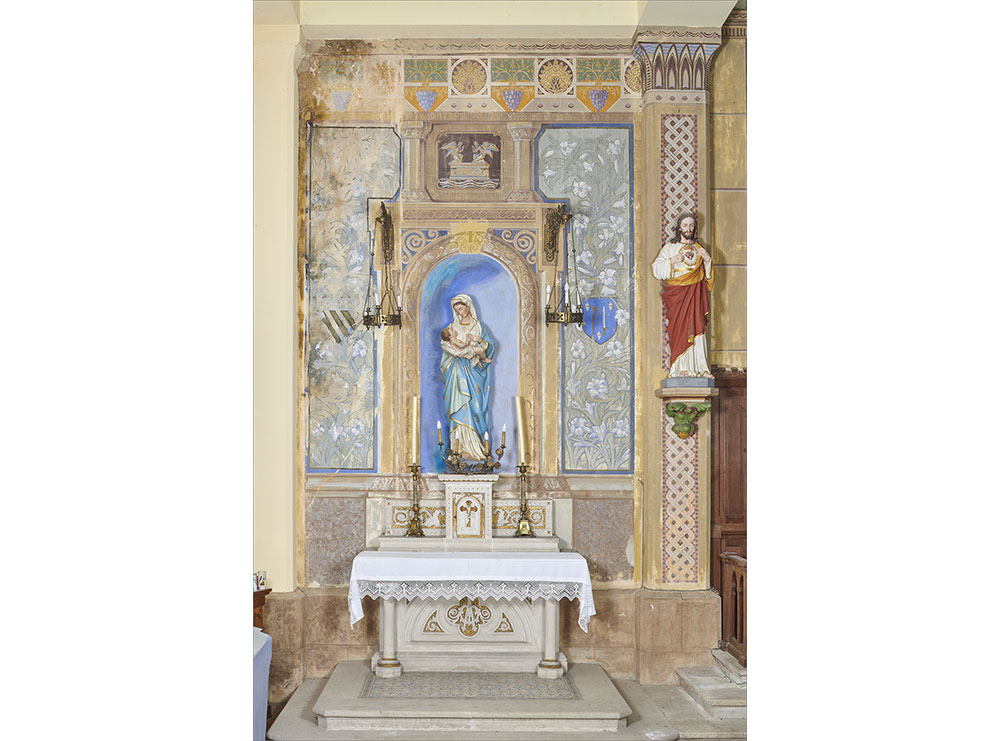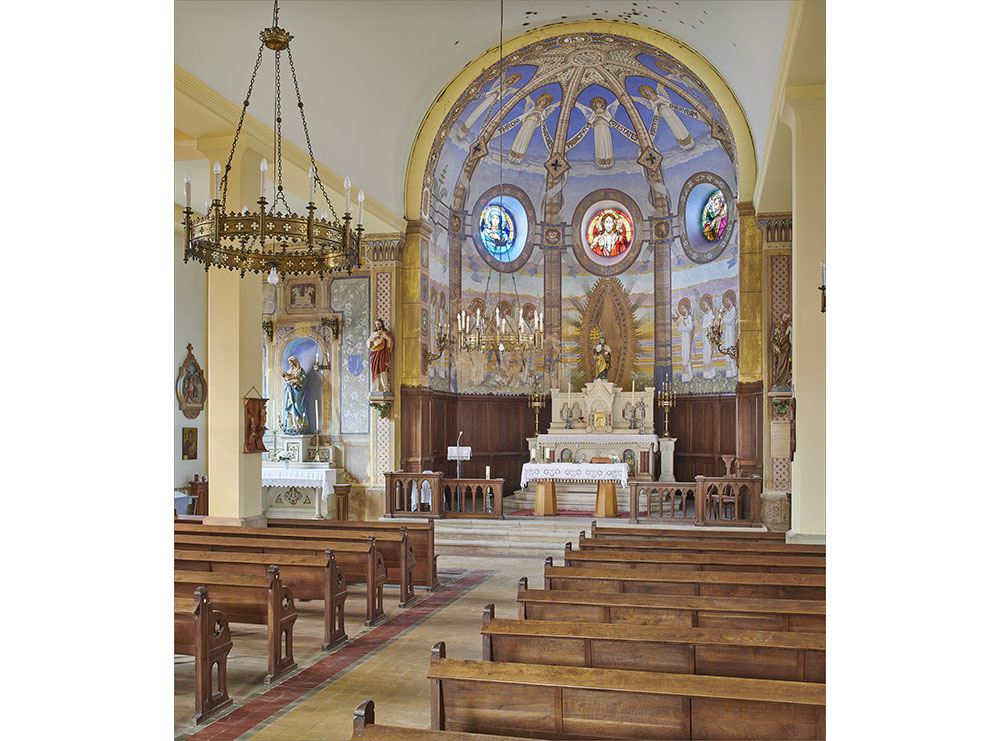Haudiomont, Church of St Urban
This church, which is dedicated to a third-century pope, replaces a building dating to the mid-17th century which was destroyed during the First World War. The reconstruction plan by the architect Blays was approved on 24 May 1924 and the blessing took place three years later.
The ensemble painted by Duilio Donzelli is especially decorative. A total of seventeen angels are depicted in the choir, on two levels; on the first, twelve angels, six on each side, move forwards in a procession holding either a palm branch or a lamp. Initially, the artist had wanted to paint an uninterrupted procession, but he executed a pentimento in order to add a mandorla containing the statue of St Urban in the centre. The Christian symbols of the phoenix, the basket of bread with fishes, the blessing hand of God and the pelican surround the oculi that separate the two levels.
Beneath the vault, five angels hold a parchment that lists the entire celestial hierarchy (Angels, Archangels, Thrones, Dominions, Principalities, Powers, Virtues, Cherubim, Seraphim). Stylistic differences are clearly visible between the two levels: in the upper part, the angels have more fixed attitudes, the facial features are less detailed, the background is uniformly blue, and the clouds are particularly simplistic. This difference may be due to the involvement of another artist, as Duilio executed the lower part while the angels holding the parchment are the work of his son Dante (1908-1999). The latter follows even more in the tradition of the Art Deco movement than his father due to the geometrisation and the stylisation of the forms. Although no signature has been found, sources confirm to us that the Donzellis worked here in 1932.
The side altars dedicated to the Virgin on the left and St Nicholas on the right are surrounded by plant decoration of fleurs-de-lis on which coats of arms are drawn: the arms of Saint-Nicolas-de-Port and those of Lorraine are associated with St Nicholas. At the back of the church, the chapel of baptismal fonts features painted decoration associated with the function of the site: the medallion, held by two angels in grisaille, shows Christ being baptised by John the Baptist.
Celestial hierarchy: classification of angelic creatures established in the 5th century. This hierarchy is traditionally made up of three levels of varying closeness to God: the Seraphim, the Cherubim and the Thrones come first, then the Dominions, the Virtues and the Powers, and finally the Principalities, the Archangels and the Angels.
Hand of God: important depiction of God the Father until the 8th century which shows a hand emerging from the sky.
Oculus: round window or opening (plural: oculi).
Pelican: according to the Church, the pelican is the incarnation of Christ sacrificing himself for the salvation of mankind, because it was believed in the Middle Ages that the male bird pierced itself with its beak in order to feed its young with its blood and save them.
Pentimento: correction to strokes or colours which is made during execution.
Phoenix: this mythical bird, which is consumed and reborn from its own ashes, symbolises Christ resurrected.





